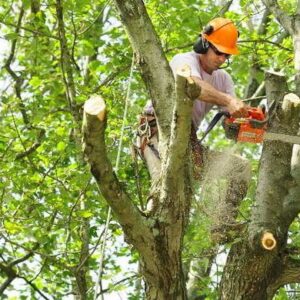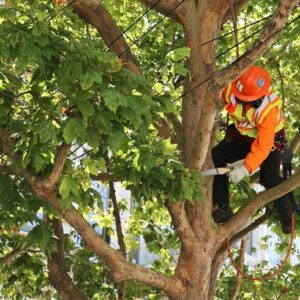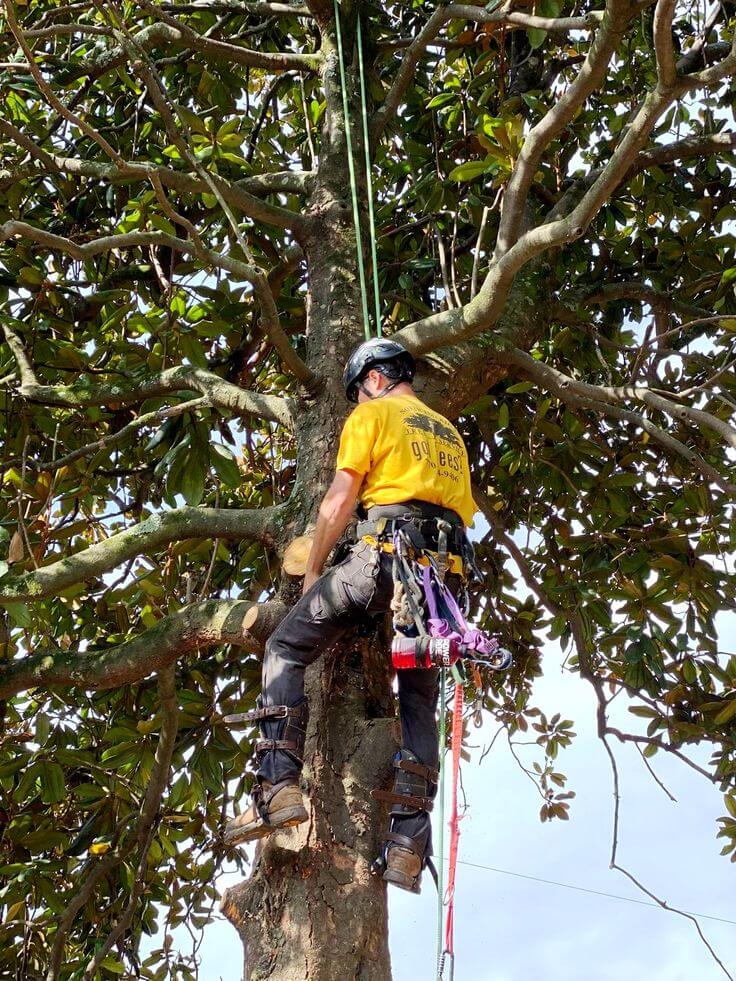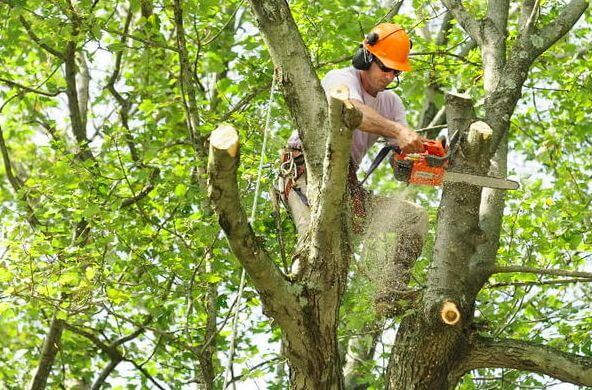Introduction
Have you ever looked out your window and thought, “That tree might need to go”? Whether it’s due to safety concerns, aesthetics, or disease, tree removal is sometimes a necessary task for homeowners. In this comprehensive guide, we’ll delve into everything you need to know about tree removal—from understanding why it’s important, to the step-by-step process, to the considerations you should keep in mind.
Understanding Tree Removal
What is Tree Removal?
Tree removal involves taking down a tree from its location, typically when it’s dead, dying, or poses a risk to property and safety. This process can be complex and requires careful planning and execution to avoid damage and ensure safety.
Common Reasons for Tree Removal
There are several reasons why you might need to remove a tree. These include:
Disease: Trees suffering from severe disease can pose a risk to other plants.
Damage: Storms or other natural events can cause irreparable damage.
Safety Hazards: Trees too close to structures can be dangerous.
Aesthetic Reasons: Sometimes, a tree might not fit into your landscape plans.
Safety Considerations

Risks of Tree Removal
Tree removal is inherently risky. There are dangers from falling branches, the tree itself, and the tools used in the process. Without proper precautions, serious injury or property damage can occur.
Importance of Professional Services
Given the risks, it’s often best to hire professionals. They have the expertise, equipment, and safety measures in place to handle tree removal efficiently and safely.
When to Remove a Tree
Signs a Tree Needs to Be Removed
Dead or Dying Tree: No leaves during growing seasons.
Structural Issues: Cracks, splits, or leaning.
Root Problems: Uplifting soil or damaged roots.
Pest Infestation: Signs of termites or other pests.
Seasonal Considerations
While tree removal can be done year-round, certain seasons may be more advantageous. Winter, for example, is often ideal because the ground is hard, minimizing damage to the landscape.
Tree Removal Process
Initial Assessment
Before removing a tree, a thorough assessment is crucial. This involves examining the tree’s health, location, and potential hazards.
Permits and Regulations
Check with local authorities regarding permits and regulations. Some areas have strict guidelines about tree removal, especially for protected species.
Preparing the Site
Clear the area around the tree to ensure a safe working environment. This includes removing any obstacles and securing the area to prevent unauthorized access.
Cutting Down the Tree

This step involves making strategic cuts to safely bring down the tree. Typically, a notch is cut on the side facing the fall direction, followed by a back cut to release the tree.
Stump Removal
Once the tree is down, the stump remains. Options for removal include grinding it down or using chemicals to decompose it over time.
Tools and Equipment
Essential Tools for Tree Removal
Chainsaw
Rope and harness
Axe and handsaw
Wedges
Tree felling wedges
Safety Gear
Hard hat
Safety goggles
Ear protection
Gloves
Steel-toed boots
DIY Tree Removal
Pros and Cons of DIY
DIY tree removal can save money but comes with significant risks. It’s suitable for small trees but not recommended for large or hazardous ones.
Step-by-Step Guide for Small Trees
Assess the Tree: Ensure it’s small enough for DIY.
Prepare Tools and Safety Gear: Gather everything you need.
Plan the Fall Direction: Make sure the tree will fall safely.
Make the Cuts: Start with a notch cut, followed by a back cut.
Clear the Area: Ensure everyone is at a safe distance.
Hiring a Professional
How to Choose a Tree Removal Service
Look for certified tsarists with good reviews. Check for proper licensing and insurance to ensure you’re covered in case of accidents.
Questions to Ask
How long have you been in business?
Can you provide references?
What is your safety protocol?
Do you offer stump removal?
Cost Considerations
Costs vary based on tree size, location, and complexity. Get multiple quotes and ensure the estimates include all potential fees.
After Tree Removal
Debris Disposal
Decide how to handle the debris. Some companies include this in their service, or you may need to arrange for separate disposal.
Landscaping and Replanting
Consider how you’ll restore the area post-removal. This might involve planting a new tree or redesigning the landscape.
Environmental Impact
Ecological Considerations
Removing trees can impact local wildlife and ecosystem. Assess the ecological impact before proceeding and consider replanting.
Recycling and Reusing Tree Materials
Wood from removed trees can often be repurposed. Options include firewood, mulch, or even furniture crafting.
Preventive Measures
Tree Maintenance Tips
Regular maintenance can prevent the need for removal. Pruning, fertilizing, and disease control are essential practices.
Avoiding Future Tree Problems
Plant trees appropriate for your climate and soil. Ensure they’re placed away from structures and power lines to avoid future issues.
Common Mistakes
Pitfalls to Avoid in Tree Removal
Underestimating the task’s complexity
Ignoring safety protocols
Failing to check for permits
How to Ensure a Successful Removal
Hire professionals for large trees, follow safety guidelines, and plan thoroughly to avoid mishaps.
Legal Aspects
Understanding Local Regulations
Every area has different rules about tree removal. Ensure compliance with local laws to avoid fines and legal issues.
Liability Issues
Understand your liability in case of accidents. Professional services typically carry insurance, which can protect you.
Cost of Tree Removal
Factors Influencing Cost
Tree size and height
Complexity of the job
Location and accessibility
Additional services like stump removal
Average Cost Estimates
On average, tree removal costs range from $150 to $1,500, depending on the tree’s size and complexity of the job.
Conclusion
Tree removal is a complex yet sometimes necessary task. Whether for safety, aesthetics, or environmental reasons, understanding the process can help you make informed decisions. Always prioritize safety and consider professional help to ensure the job is done correctly and efficiently

